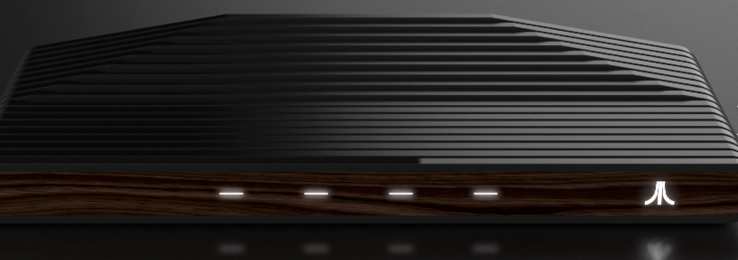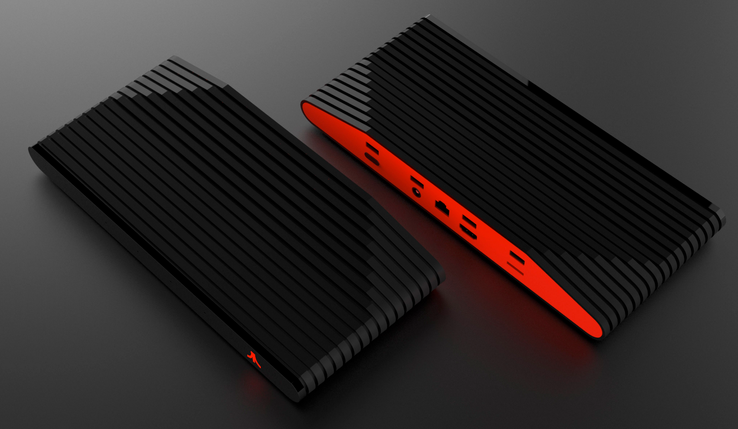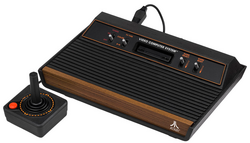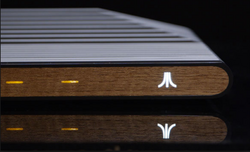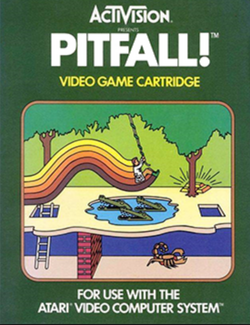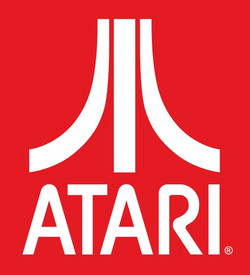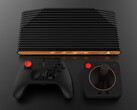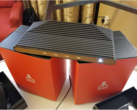Our thoughts on the current state of the Ataribox
Introduction
Retro-based gaming consoles have been some of the hottest items this past year. Nintendo's NES Classic Edition kicked off the new trend of compact, officially licensed micro-consoles built to model gaming systems from 20-30 years ago. The Big N followed up their success with a successor console that was based (as expected) on the Super NES.
While Nintendo had a huge hit on their hands (that later resulted in supply chain problems), other companies tried to hop on the bandwagon. One in particular has generated a lot of buzz around their own take on the retro micro-console: Atari.
Say hello to the Ataribox.
Despite the storied history of Atari, there are four red flags exhibited by the Ataribox that we feel require discussion:
- Lack of information
- Lack of games
- Lack of funding
- Lack of a physical prototype
These points are alarming. We believe that consumers should wait on pre-ordering the device until more information about the games, the hardware, and the software of the console are released. But why do these factors give us pause? Read below to find out.
A brief lesson in history
Before we dive into the future of Atari's console business, let's take a brief look at its past.
Back in the late 1970's, the home video game console market was a veritable Wild West, and Atari quickly emerged as the sheriff. Atari released the Atari Video Computer System, better known as the Atari 2600, in September of 1977. The console was a runaway success and quickly became popular for its rudimentary arcade-style games, and its faux-wood panelling and single-button joystick controller became icons synonymous with video games. For the next 6 years, Atari was king. Then 1983 happened.
After the successful launch of the 2600, every business imaginable started releasing games on the console, many with nigh non-existent quality control. Even Purina, an animal product and feed manufacturer, had its own game on the 2600. The result was a market that quickly became inundated with poorly designed games for Atari's console that were nothing more than quick cash grabs. Consumer confidence quickly fell and the Atari brand was almost irreparably damaged. Consumers lost trust with video games and, by relation, Atari. The floor fell out, and most game companies went bankrupt.
Atari fought to maintain some semblance of market share, but the damage had been done and 1983 struck deep. On top of competing against its own tarnished image, Atari couldn't keep up with the hot new Nintendo Entertainment System that offered better graphics, better sound, and a highly advertised quality control program that ensured only the best of the best games made it to market. Atari saw middling success with the release of the 5200, the 7800, and the Jaguar systems. Atari ultimately exited the console market in late 1996 and shifted focus to developing games and software exclusively and was acquired by Hasbro and later Infogrames, which owns the brand today.
What we know for sure about the Ataribox
In a nutshell, the Ataribox (announced in June of this year) is Atari's response to the booming (and lucrative) resurgence in retro gaming and the company's triumphant re-entry to the home console market. The Ataribox will be a small console that can play classic Atari 2600 games as well as new AAA titles. The tiny box will run a variant of Linux and will be powered by a custom AMD CPU and GPU. It will come in either a black and red color scheme or a black shell with real wood panels. The end users will have full access to the operating system, but Atari has stated that the default interface is designed for TV. The company announced that the Ataribox would be up for preorder on December 14th, although they have since had to push preorders back to an unknown date.
Red Flag 1: No relevant information
Herein lies the first red flag with the Ataribox: for such a huge name in gaming and such a highly anticipated console, we know very little about the Ataribox.
Think back to the launch of the current generation of consoles. We saw copious teasers and information leaks about the Nintendo Switch, the Xbox One, and the Playstation 4. Even micro-console releases, like the NES Classic Edition, had lots of information released by their manufacturers, and with good reason. The companies behind consoles like to generate buzz prior to a console's release because this typically translates into strong Day One sales. The only information we've been given about the Ataribox can be summed up in a single sentence: the Ataribox will be an AMD-powered Linux machine with real wood paneling and will be able to play games of some kind. We know nothing about what the OS will look like. We have no solid information about connection options, other than the USB and HDMI ports visible in renders. What standard will the USB ports run on? What resolutions will the HDMI port support? It's all incredibly vague, especially on the piece that counts for any console - the games.
Red Flag 2: No games
The complete lack of information surrounding any games for the system is another red flag. Atari has said that the Ataribox will be able to play "killer retro games" and "hot new Indie titles" but has failed to expound upon what these statements mean. If the killer retro titles refer to games seen on the original Atari 2600, that's not something to be terribly excited about. While this sounds great on paper, many of the games developed for the 2600 were low-quality ports of arcade titles with shallow gameplay. Games were meant to be picked up and played for a few minutes at a time. There's a reason why most Atari games sell for USD $5-10 on sites like eBay; they're not worth much more in terms of gameplay. It's not likely that sales of retro Atari titles would be tenable.
As for the hot new Indie titles, Atari will have to secure exclusive games from Indie developers, and they will need to be desirable. The Indie scene is rife with lackluster titles that are often ignored due to their mundane gameplay. The chances of an Indie game exploding in popularity on any platform are extremely slim. While it's likely that Atari will sell common Indie titles like Terraria and Minecraft, these are hardly console sellers at this point.
This point is made almost moot by the fact that Atari hasn't revealed any titles coming to the platform at all. Each console has its own killer app. The Playstation 4 has the Uncharted series; the Xbox One has Forza Motorsport and Halo; the Switch has Mario and Zelda. We don't have know a single IP coming to the Ataribox. This begs the question: how does Atari expect to sell the console at launch if nobody knows what games they can play on it?
Red Flag 3: No investor funding
Atari hasn't been in the console game since the mid 90's. The failure of the Jaguar forced the company out of hardware completely, although Atari lived on by developing software for other manufacturers' consoles for years. Atari fell on hard times in the early 2010's and filed for Chapter 11 bankruptcy in 2013. The Atari that emerged from those ruins was staffed by 10 people and focused primarily on casino games.
It could be that Atari can't secure adequate investment to fund the project so they're turning to alternative funding platforms to bring in additional capital. However, this is a risky move, and not for Atari. It puts an inordinate amount of risk on the part of the backers. If Atari meets their crowdfunding goal (which is very likely considering the amount of press the idea has received), they'll be able to receive all of the backers' money in full. But this in no way holds them to deliver the advertised product, and may not even be enough to force them to deliver any product at all. There have been countless Kickstarter and Indiegogo campaigns that were fully funded but either delivered a radically different product than advertised or never delivered anything at all (see: the Ouya, Smach Z, Coleco Chameleon, and the Stormfly wristband).
Atari is shifting a lot of risk onto their consumers by turning to crowdfunding.
Red Flag 4: No physical prototype
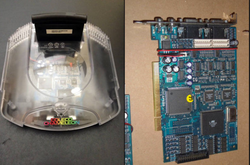
As of this writing, Atari was planning on opening up an Indiegogo campaign on December 14th that has since been halted in order to "[take] more time to create the platform and ecosystem the Atari community deserves." While the hiatus is a bit confusing, it may be to allow more time for the development of a working prototype. This would be excellent, because the Ataribox currently does not exist in any physical form.
When it comes to crowdfunding, there are dozens of platforms to which a startup can turn, but there are really only two that matter: Kickstarter and Indiegogo. There's a distinct difference between these two as well. Kickstarter demands that you have a physical working prototype prior to launching a campaign, but Indiegogo does not; as such, the platform is rife with fraudulent campaigns that have no intention of delivery.
It's been about 6 months since the first news of the Ataribox broke, which is an adequate amount of time to develop a rough prototype. There have been no leaks or reports on any kind of physical machine, though, and Atari has been completely silent on the matter. In addition, Atari was planning on taking a $250-300 preorder for what is, at this point, vaporware. This should be worrying to potential backers, and consumers should be very hesitant to fund the project until a physical prototype appears.
Conclusion
We are making no claims as to the intent behind or legitimacy of any crowdfunding campaign involving the Ataribox. The most likely explanation is that this is a company staffed with new, inexperienced developers who aren't fully aware of what it takes to build a new console from the ground up. It's likely they're in over their heads and that they're still planning out some key factors like how the console will be profitable over the long term while still being palatable enough for new consumers.
As it stands, Atari isn't selling a console right now; they're selling a dream. Gamers that are interested in the Ataribox and are considering backing the project should definitely wait until we receive more info about the capabilities of the hardware, a detailed list of committed titles from first- and third-party developers, and a prototype is shown to work independently of any pre-recorded promotional material. Until then, hold off on giving any money to Atari. We've waited this long for the exiled king to return; we can wait a little longer.
We reached out to Atari for comments on these points. They had not responded by press time. We will update this article should we receive a response.




